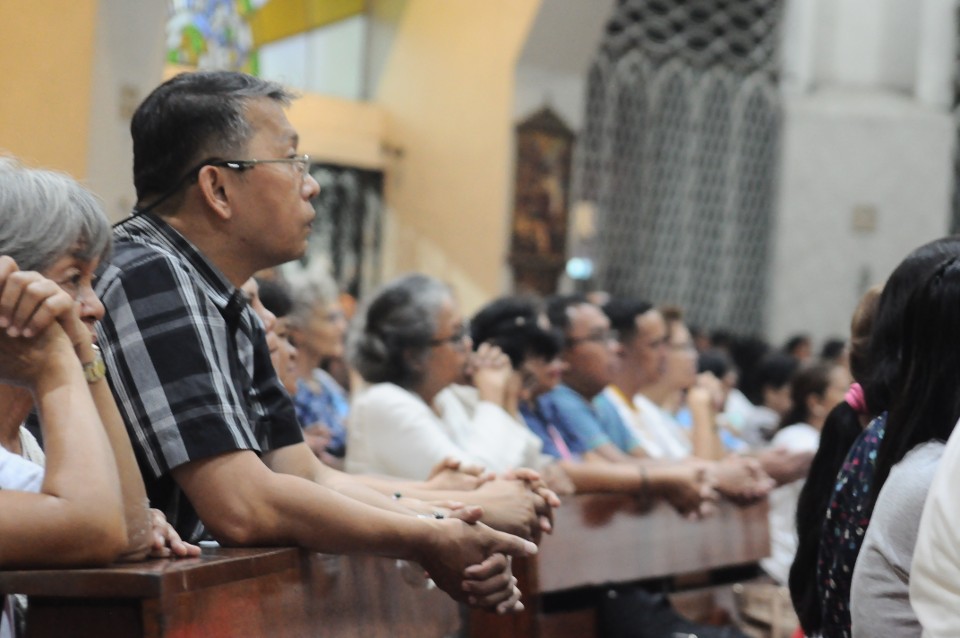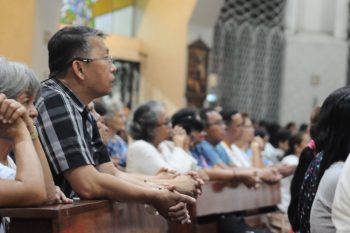 4th BEC National Assembly (Photo by Brenda P. Milan)
4th BEC National Assembly (Photo by Brenda P. Milan)
From the lens of a lay man: Strange are the ways of the Lord
Spain and Portugal invaded South America in the 1500s. Today, after 500 years, South America remains as the hardest place to evangelize because of its 1. Size, 2. Terrain, mostly mountains and rain forests and 3. Very few priests/nuns. Christianity can only be felt along the towns/villages near rivers and sea coastal areas. Less than 40% of the nations (Argentina, Brazil, Chile, Ecuador, Peru, Venezuela) have been evangelized.Imagine Metro Manila covering Parañaque, Quezon City, Caloocan, Navotas, Malabon. Imagine Manila with only one parish in Quiapo; there are no roads, trails, no buses, jeeps, bridges, telephone and power. Imagine Manila’s coast as a swamp from Cavite to Bulacan with thick forests filled with snakes, spiders, bats, etc. This was the situation in South America 500 years ago.
Today, many parts of South America are still unexplored or uninhabited. Spain evangelized Luzon and Visayas when Urdaneta, Legaspi occupied Manila in the late 1500s. The mission work was uninterrupted for 500 years. The Jesuits were the first and only Mindanao missionaries beginning the middle of the 1600s. They pulled out two times; in the late 1600s, Spain’s military abandoned Mindanao and in the middle of 1700s, when the pope suppressed the Jesuits. In the 1780s, the Jesuits returned to Mindanao when a new Pope reinstituted the order. Thus, Mindanao is way, way behind Luzon and Visayas in mission work.
In the 1950s, the Catholic Church in South America saw the dramatic increase of protestant evangelization. Two Catholic congregations saw the dangers and did something about it. Without their knowing it, the Jesuits and Maryknollers, mostly Americans, developed a system independently. This was the Basic Ecclesiastical Community. In the 1960s, the Pope appointed Jesuit Father Claver as Bishop of Bukidnon (Malaybalay) and Maryknoll Father Regan as Bishop of Davao del Norte (Tagum).
Strange are the ways of the Lord. Bukidnon and Davao del Norte had the same problems like all the parishes in Mindanao and in South America. Acting independently, Bishops Claver and Regan pushed for the creation of B.E.C. in their dioceses.
To attract the faithful especially in the very, very far Catholic communities up in the hills and mountains which the parish could barely reach, they changed name to Gagmayng Kristohanong Katilingban, the GKK because 99% of the faithful in the remote areas spoke Visayan. They required a group to have a chapel before it can be recognized as a GKK.
The use of Visaya or Cebuano and the chapel were very effective. There were very few and very small villages in the mountains. Most farms are far from each other. Thus, Sabbath worship once a week in the GKK chapel became the main social activity for the faithful. They felt at home because the services were in Cebuano. The chapel became the lighthouse for GKK members in these remote areas, giving them a sense of belonging, identification, a place for fellowship and religious activities. Being a GKK became a badge of honor, respect and “humility”. The biggest problem of the faithful on the far areas was the difficulty in going to mass in the Parish church on Sundays and to take communion. The GKK Kasaulogan where the Pangulo gives communion meant a lot for members. Because of this they looked forward for the weekly “kasaulogan” for fellowship, meeting far flung neighbors and sharing ideas under a cloud of spirituality in the chapel. When the Parish Priest goes to their chapel, on foot, motorcycle, horseback to celebrate the fiesta of their patron saint, there is a mutual sigh of relief, joy and “dakong pasalamat sa Kalooy sa Diyos”.



No Comments